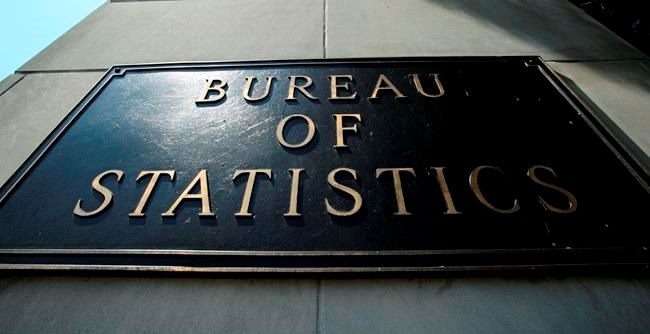OTTAWA — Canada's economy had its worst quarterly stretch since the start of the pandemic, contracting at an annualized rate of 1.1 per cent between April and June and possibly dropping further in July.
The decrease in real gross domestic product in the second quarter was the first quarterly contraction recorded since the sharp drop during the same stretch one year earlier during first-wave lockdowns.
And it was a sharp turnaround from the agency's initial estimate last month that the economy expanded at an annual rate of 2.5 per cent for the April-to-June period, which Statistics Canada chalked up to additional data that wasn't available last month.
Statistics Canada said driving the drop in the second quarter of this year were declines in home resale activity and exports. Increased business and government spending, as well as new home construction and renovations in the quarter weren't enough to make up the shortfall.
Household spending also stayed flat in the quarter, even as restrictions rolled back in much of the country and consumers had more places to spend.
What appears to have happened, though, is that consumer spending in the quarter appeared to fuel price increases amid widespread supply-chain issues, rather than fuel growth.
The Bank of Canada has decided to let inflation run above its two-per-cent target until the economy recovers, but now faces a more complicated policy-making landscape, said BMO chief economist Douglas Porter.
He said tightening monetary policy — usually done to cool price pressures — would slow growth, but adding stimulus could simply fuel inflation.
"This is where policy-making gets very complicated, and the decisions are tough," Porter said.
"Sometimes you have the best of all worlds when you've got strong growth and low inflation, and sometimes you have the worst of all worlds where you have high inflation and low or no growth — and that's the situation that we're temporarily in right now."
The second quarter ended with the economy growing by 0.7 per cent in June after two months of declines, placing total economic activity 1.5 per cent below pre-pandemic levels recorded in February 2020.
The agency said its initial estimate for July shows a contraction of 0.4 per cent for the month.
Statistics Canada said the main decreases in July were in manufacturing, construction and retail trade, while accommodation and food services had strong monthly gains as public health restrictions eased.
Total economic activity in July was about two per cent below pre-pandemic levels recorded in February 2020.
The figures suggest the Canadian economy wasn't on as strong a footing as many believed at the start of the third quarter of the year, said CIBC senior economist Royce Mendes.
"And with the fourth wave now seemingly here, the economy faces another storm to navigate through," he wrote in a note.
There were some silver linings in the figures, said TD senior economist Sri Thanabalasingam, pointing to consumer reorienting their spending from goods to services, which weighed on retail trade output, and a cooling in the super-hot housing market towards more normal levels.
Those weaknesses, he said, should become less of a drag as activity in each sector normalizes.
What could pose a larger drag for the rest of the year is the spread of the Delta variant of COVID-19, said Thanabalasingam.
Provinces are looking to avoid lockdowns by proposing vaccine passports to access non-essential businesses, companies implementing regular testing, and a federal vaccine mandates for workers and travellers.
The rise in case counts could affect consumer confidence that could prove to be a material shock, Thanabalasingam said.
"That could weaken the pace of the recovery," he said.
"I don't think it blows the economic recovery off course, given all the measures that we have seen being implemented, but it could slow the recovery."
Porter said he's cutting his forecast for growth for the year to five per cent from six per cent, but added that "five per cent might even look a tad optimistic at this point, to be honest."
This report by The Canadian Press was first published Aug. 31, 2021.
Jordan Press, The Canadian Press


